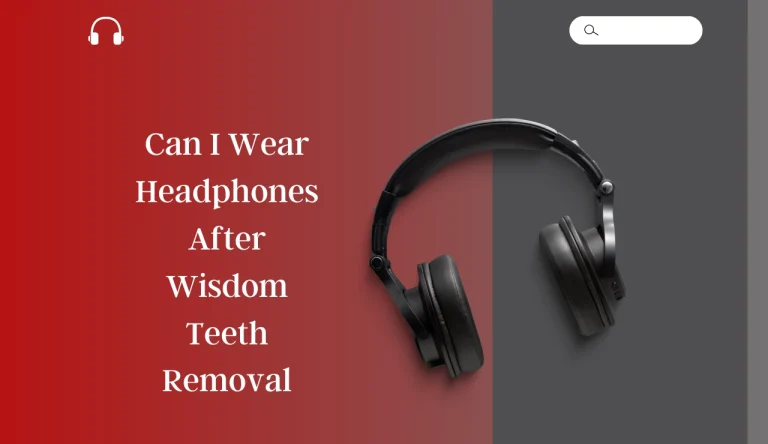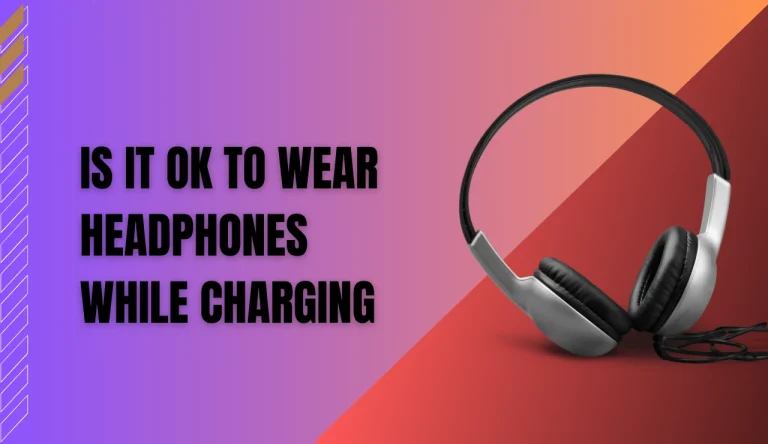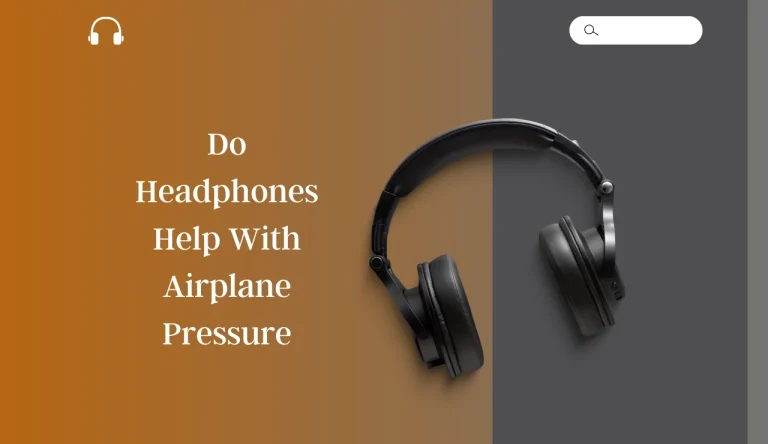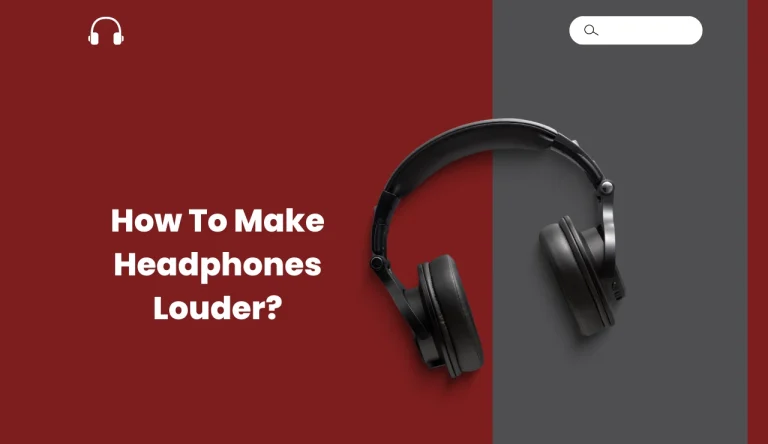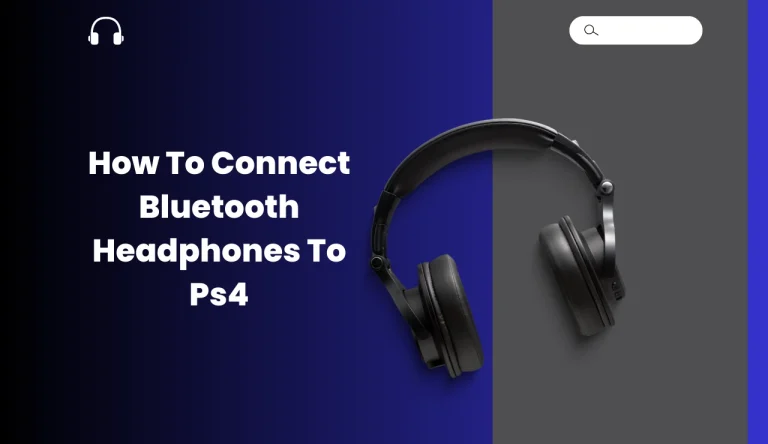Can You Wear Bone Conduction Headphones With Glasses
Are you someone who wears glasses and loves listening to music or podcasts on the go? If so, you may be wondering if it’s possible to wear bone conduction headphones with your glasses.
Well, the good news is that yes, you can! Bone conduction headphones are designed to transmit sound vibrations through your cheekbones directly to your inner ear, bypassing the eardrum. This means that they don’t obstruct your ears or interfere with your ability to wear glasses.
Can You Wear Bone Conduction Headphones With Glasses? achieving the best fit can sometimes be a challenge, as both your glasses and headphones need to sit comfortably on your head without causing any discomfort. In this article, we will explore how bone conduction headphones work, their compatibility with different types of glasses, tips for achieving the best fit, and more.
So let’s dive in and find out how you can enjoy music while wearing both glasses and bone conduction headphones!
Key Takeaways
- Bone conduction headphones can be worn comfortably with glasses by making small adjustments to the position of the headphones and glasses.
- The compatibility between bone conduction headphones and glasses depends on the lens design and frame of the glasses.
- Adjustable tension, specially designed temples, or ear hooks can improve the fit of bone conduction headphones with glasses.
- Wearing glasses may slightly affect the performance of bone conduction headphones, but careful adjustment can optimize audio output.
How Bone Conduction Headphones Work
Can’t wait to see how bone conduction headphones work and blow your mind with their innovative technology!
Bone conduction headphones use a unique mechanism that delivers sound waves directly to your inner ear through vibrations in your skull. This technology has some distinct advantages over traditional headphones. First, it allows you to hear external sounds while listening to music, making them perfect for outdoor activities or situations where situational awareness is crucial.
Second, they’re more comfortable as they don’t sit inside or cover your ears. However, there are also limitations to bone conduction headphones. The sound quality may not be as good as traditional headphones, and the volume levels may be limited due to the potential risk of hearing damage.
Now let’s talk about their compatibility with different types of glasses…
Compatibility with Different Types of Glasses
Incorporating different types of eyewear can affect the compatibility of bone conduction headphones. When considering using bone conduction headphones with glasses, there are two main factors to consider: lens compatibility and frame design.
Lens compatibility refers to how well the headphones sit on your head without interfering with your glasses lenses. Some people may find that certain headphone designs press against their lenses, causing discomfort or distortion.
Frame design is also crucial; bulky frames or arms that extend behind the ear can prevent a secure fit for bone conduction headphones. It’s important to choose a headphone model that allows enough space for your glasses frames and ensures a comfortable fit.
By finding the right combination of lens compatibility and frame design, you can achieve the best fit for wearing bone conduction headphones with glasses seamlessly.
Achieving the Best Fit
To achieve the best fit, it’s essential to find a headphone model that comfortably accommodates your glasses frames and allows for seamless use. Proper alignment is key when wearing bone conduction headphones with glasses. Look for models that have adjustable tension, allowing you to customize the fit to your specific needs. This ensures that the headphones sit securely on your head without causing discomfort or slippage.
Additionally, some headphones come with specially designed temples or ear hooks that can help improve stability when wearing glasses simultaneously. By finding a pair of bone conduction headphones that properly aligns with your glasses frames and offers adjustable tension, you can enjoy a comfortable and secure fit during extended listening sessions.
Moving on to sound quality and performance…
Sound Quality and Performance
When it comes to sound quality and performance, there are a few key points to consider.
First, bone conduction headphones offer clear and crisp audio output, allowing you to enjoy your music or podcasts with excellent clarity.
Additionally, these headphones provide noise isolation and reduction, ensuring that you can fully immerse yourself in your audio without any distractions from the outside world.
Lastly, bone conduction headphones also excel in voice clarity for phone calls, allowing you to have crystal clear conversations without any interference or muffled sounds.
Clear and Crisp Audio Output
With bone conduction headphones, you’ll experience crystal clear audio output that’ll make your music and podcasts sound amazing while wearing glasses.
The benefits of bone conduction technology allow for an innovative listening experience without blocking your ears. Unlike traditional headphones, bone conduction headphones transmit sound through vibrations that bypass the eardrums and directly stimulate the inner ear. This method ensures that the audio is delivered with exceptional clarity, as there are no physical barriers obstructing the sound waves.
By utilizing this cutting-edge technology, you can enjoy immersive audio while still being able to wear your glasses comfortably.
Now, let’s delve into another crucial aspect of bone conduction headphones: their ability to provide noise isolation and reduction for an uninterrupted listening experience.
Noise Isolation and Reduction
Imagine being completely immersed in your favorite music, with all external noise seamlessly fading away, thanks to the noise isolation and reduction features of these incredible headphones. When it comes to bone conduction headphones, the impact on hearing health is a crucial aspect to consider.
These headphones transmit sound through vibrations that bypass the eardrums and directly stimulate the inner ear. Proper positioning is key to ensure effective transmission and prevent any potential damage to your hearing. Wearing glasses alongside bone conduction headphones may slightly affect their performance as they can interfere with the placement of the transducers.
However, with careful adjustment and finding the right balance between both devices, you can still enjoy optimal audio output without compromising on comfort or safety. Transitioning into voice clarity for phone calls, let’s explore how these headphones excel in providing clear communication capabilities.
Voice Clarity for Phone Calls
Now that we’ve discussed noise isolation and reduction, let’s move on to another important aspect of bone conduction headphones: voice clarity for phone calls.
One of the advantages of bone conduction technology is its ability to provide clear and crisp audio during phone conversations. The built-in microphones in these headphones are designed to capture your voice effectively, ensuring that the person on the other end can hear you clearly, even in noisy environments.
However, if you’re experiencing any issues with microphone quality or clarity during calls, there are a few troubleshooting steps you can try. Make sure the microphone isn’t blocked by hair or clothing, adjust the positioning of the headphones on your head, and check for any software updates for your device.
By following these simple steps, you can enhance your calling experience with bone conduction headphones.
Speaking of enhancing experiences, let’s now delve into the topic of durability and longevity…
Durability and Longevity
Despite their durability and longevity, bone conduction headphones can be comfortably worn with glasses. The design of these headphones allows for a secure fit without causing discomfort or interference with the frames of your glasses. This is achieved through the use of adjustable headbands and flexible materials that adapt to different head shapes and sizes.
Additionally, bone conduction technology doesn’t require any direct contact with your ears, eliminating the need for bulky ear cups that could potentially interfere with glasses.
To further emphasize this point, the lightweight construction ensures minimal pressure on your ears and temples. The adjustable headband allows for a customizable fit, accommodating various glasses styles. The flexibility of the materials used in construction reduces the risk of breakage or damage to both headphones and glasses. Extensive durability testing has been conducted to ensure long-lasting performance.
With these features in mind, you can confidently wear bone conduction headphones alongside your glasses without compromising comfort or functionality.
Moving forward into the discussion about additional features and functions…
Additional Features and Functions
Furthermore, the latest models of bone conduction headphones come equipped with a variety of additional features and functions that enhance your listening experience. These headphones prioritize comfort and comfortability, allowing you to wear them for extended periods without discomfort.
The design and aesthetics have also been improved, with sleek and modern designs that cater to different personal styles. Additionally, some models offer waterproof capabilities, making them ideal for outdoor activities or workouts in any weather condition. Others include noise-canceling technology, ensuring an immersive audio experience even in noisy environments.
A few models even incorporate voice assistant integration for hands-free control of your device. With these advancements in technology, bone conduction headphones are continually evolving to provide users with the best possible listening experience. Moving forward into the next section about ‘tips for using bone conduction headphones with glasses,’ let’s explore how you can comfortably use both together without compromising on sound quality or comfort.
Tips for Using Bone Conduction Headphones with Glasses
Incorporating glasses while using bone conduction headphones can be achieved with ease by following a few simple tips.
To avoid discomfort and pressure points, it’s important to adjust the position of both the headphones and glasses. Start by ensuring that the headphones are positioned correctly on your cheekbones, allowing the vibrations to transmit sound without interfering with your glasses’ arms or nose pads.
If necessary, you can also slightly adjust the angle of your glasses to find a more comfortable fit. Additionally, consider using thinner frames or frames with adjustable nose pads to minimize any potential interference between the headphones and your glasses.
By making these small adjustments, you can enjoy the benefits of bone conduction technology without compromising on comfort or audio quality.
Frequently Asked Questions
Conclusion
In conclusion, wearing bone conduction headphones with glasses is indeed possible and can offer a convenient audio solution for those who wear prescription eyewear. However, it’s important to consider certain factors such as the compatibility of different glasses types, achieving the best fit for optimal sound quality, and ensuring durability and longevity.
With proper adjustments and careful consideration of additional features, using bone conduction headphones with glasses can provide an enjoyable listening experience without compromising on comfort or style.
Read Also:
Can I Wear Headphones After Wisdom Teeth Removal

